Ah, weddings. They always make us cry … because seriously, have you tried figuring out proper wedding invitation wording? There are hundreds of rules! Some of which are hundreds of years old.
Well wake up, world! Times have changed, and we’re betting whatever wedding you have planned won’t involve handfasting and troths. That’s why we’ve compiled this handy-dandy guide to wedding invite wording for modern matrimony, guest-starring PicMonkey’s new wedding invite templates. We’ll give you an overview of the rules and where they come from, then show you how to break ’em (and look good doing it).
Parts of the wedding invite
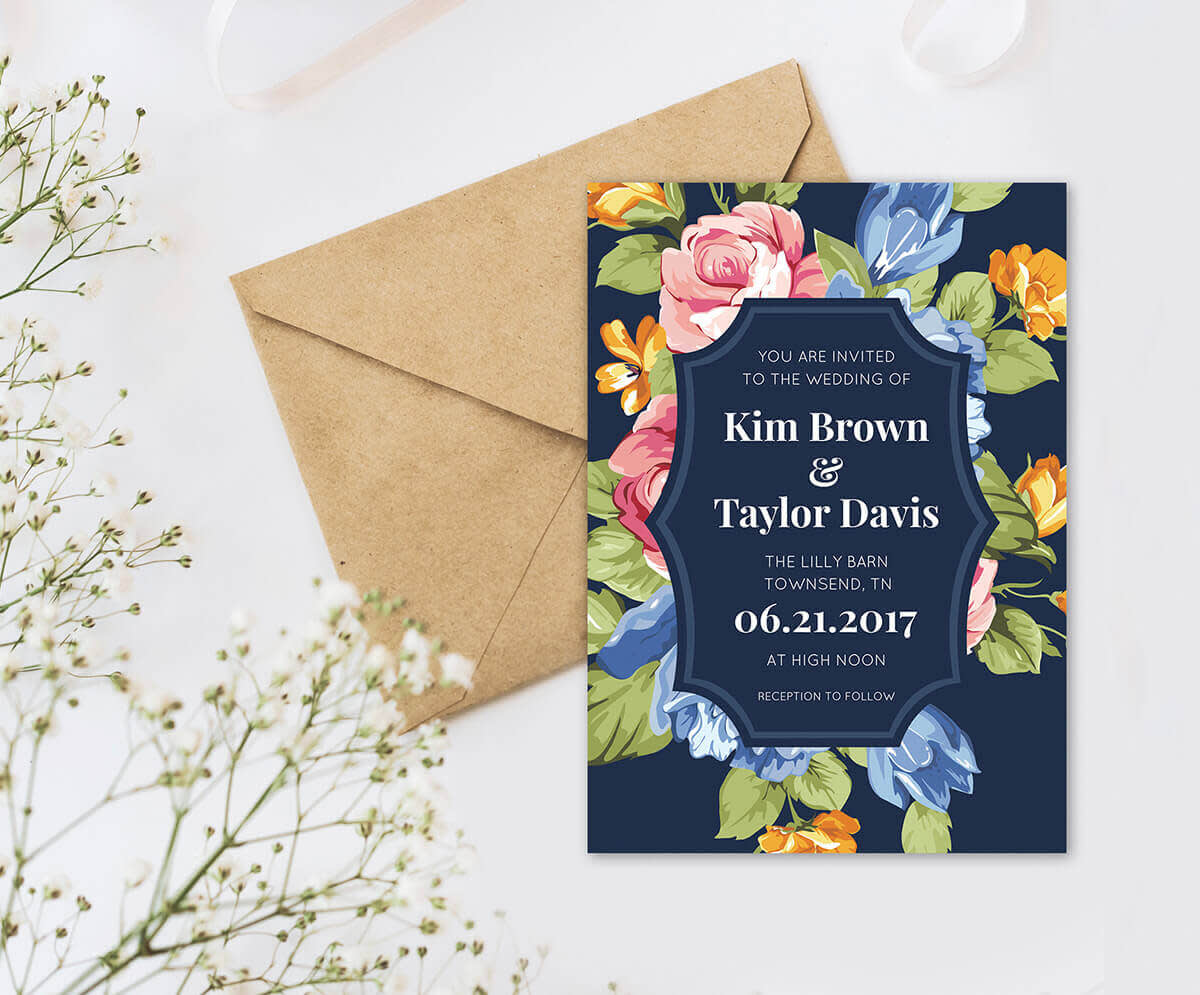
A “traditional” wedding invite declares the following, in this order:
Host line
Action line
Names
Time/place
Party line
So let’s break it down!
Host line. Or, who’s driving this plane? Back when women had dowries (cash payouts from their parents), the answer was “the bride’s family.” That’s why it’s traditional for the bride’s family to pay for the wedding, and thus to be listed as the hosts; however, now that women can vote, work, and own property, this tradition may not make sense for your own life.
Action line. Where you request the hono(u)r of their presence/pleasure of their company. There are old-school rules about this that have to do with the exact religious building where your wedding is taking place, but basically, honour and presence are for a religious ceremony, pleasure and company keep things secular.
Names. The soon-to-be-bewedded. Traditionally the bride’s name comes before the groom’s name because LADIES FIRST. But if you have two brides, no brides, or just like the sound of groom’s-name-then-bride’s-name, you can rearrange however you want.
Time/date/place information. Arguably the second-most important part of any wedding invitation (after “who’s getting married”).
Conga line. Okay, okay, “party line.” This tells guests what to expect at the reception, whether it’s “Please join us for an intimate dinner afterwards,” “Dinner and dancing to follow,” or “Skydiving at dawn.”
What’s not on a wedding invitation
While you don’t have to stick to the outline above (at all) because you’re an adult and you make your own rules, we do want to advise you that there are a few things that are not traditional parts of wedding invites:
Registry information.There’s no need to mention gifts at all on your invitation (many find it mercenary). Instead, list registry info separately.
RSVP info. You can include this one on a separate card too!
Guest restrictions. If you don’t want every guest to bring a plus-one, usually they’ll get it if you only list their name on the invitation. If the wedding or reception venue is 21+, you can mention it on your invitation or on your wedding website.
Different wedding invitation wording
PicMonkey’s wedding invite templates are, for the most part, middle-of-the-road in terms of etiquette: decently polished, but not super-fancy. But what if your wedding is super-fancy, or you’re planning on having a volleyball tournament in lieu of a reception, or you’re not sure how to let your loved ones know who’s hosting? That’s where an editable template comes in handy.
Formal
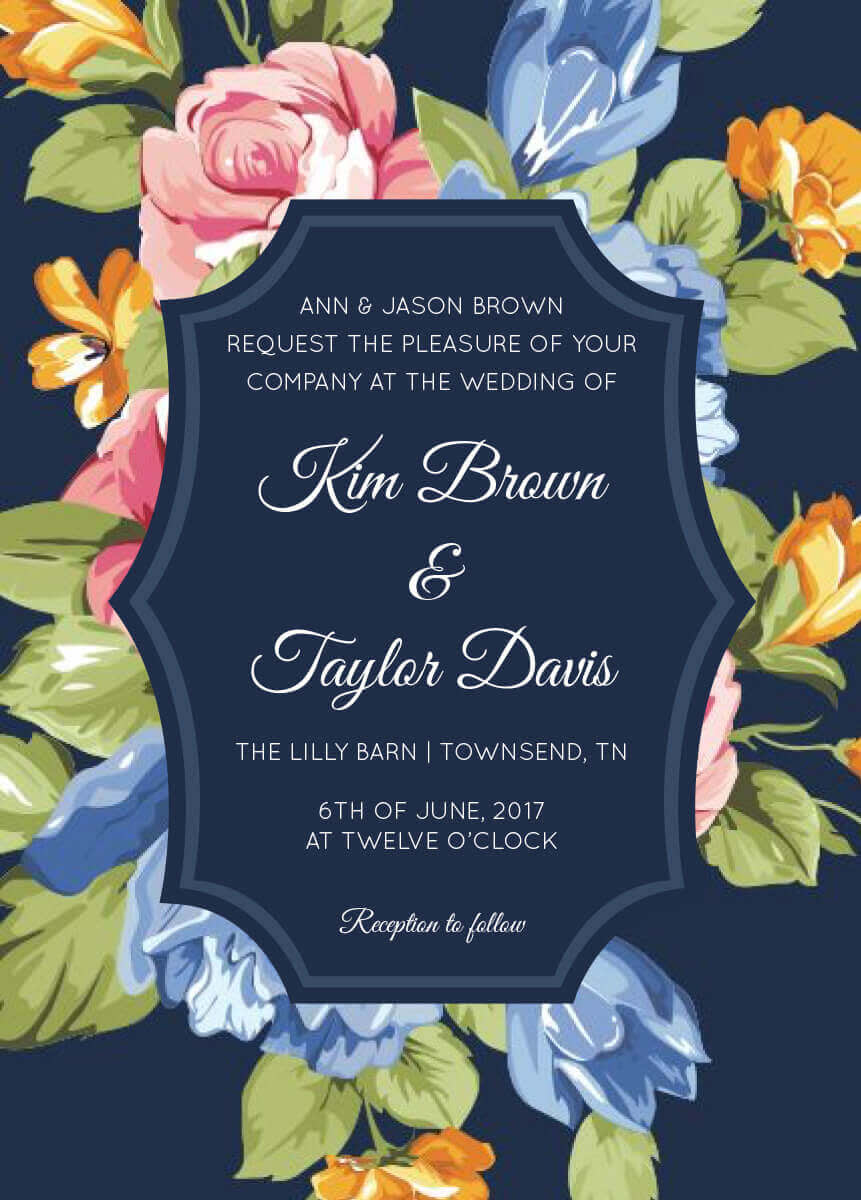
Original template: Flora Boom.
Your family may not have its own crest, but that doesn’t mean you can’t put your pinky in the air and get patrician with an Emily-Post-approved wedding invite. Note that the hosts are the parents of one of the brides, they “request the pleasure of your company” to let you know it’s a secular ceremony, and the time is noted with “o’clock.” Smashing!
Psst … to get an extra-fanciful look, try incorporating calligraphy fonts into your invites.
Quirky
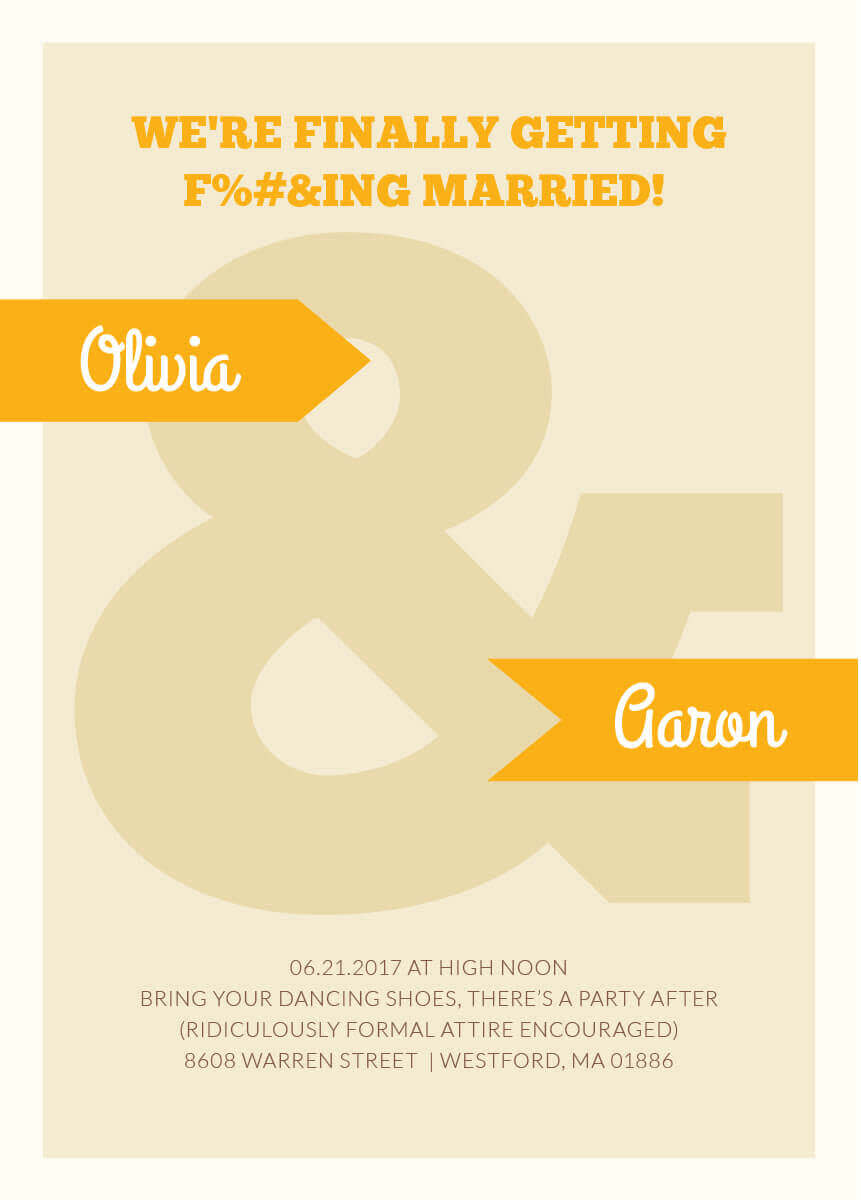
Original template: Amper-bands.
There are lots of reasons to crave more relaxed wedding invite wording, especially if you’re planning a relaxed kind of wedding. Using quirkier wording lets invitees know to expect a nontraditional ceremony, a masked ball for the reception, or no dress code whatsoever.
In the above example, the happy couple takes an irreverent approach to their wedding with colorful language. You don’t like it? Too bad! It’s their day.
It’s complicated
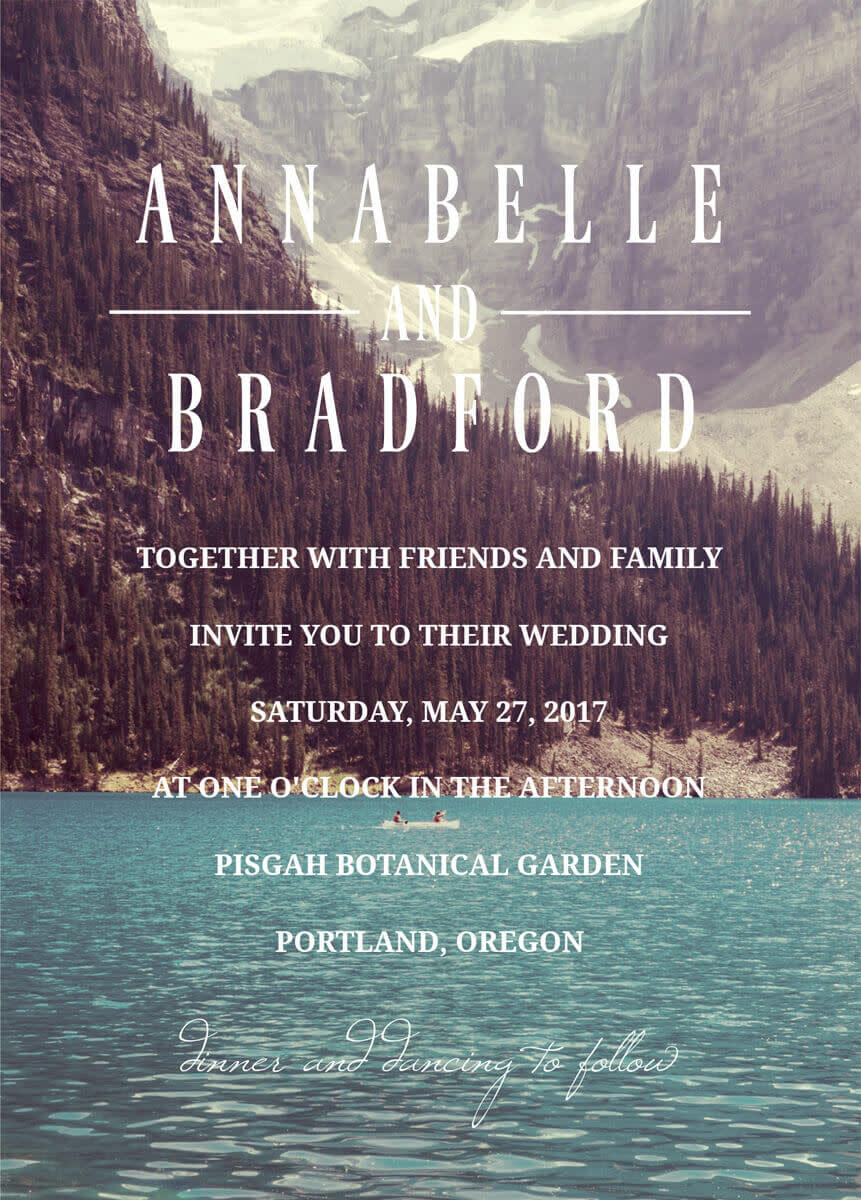
Original template: Woodland Glide.
Sometimes, finessing your wedding wording is less about tone and more about conveying the right information.
In the above example, rather than Annabelle’s parents funding/hosting the wedding, or Annabelle and Bradford skirting the question altogether, the couple wants attendees to know that their wedding is a community effort. Their host line reflects that by including “friends and family.”
Your wedding invites truly can say whatever you want them to. When in doubt, just remember that invitations give attendees their first taste of what your wedding will be like, so think about who you’re writing for and what kind of wedding you want to have.
Oh, and once you’ve honed your message, don’t forget that you can craft exquisitely worded wedding invitations with PicMonkey templates.
Editing a template’s text in PicMonkey
1. From PicMonkey.com, go to Design > Templates.

2. Select “Wedding” from popular tags, and click a template to edit it. That template will open in the editor.
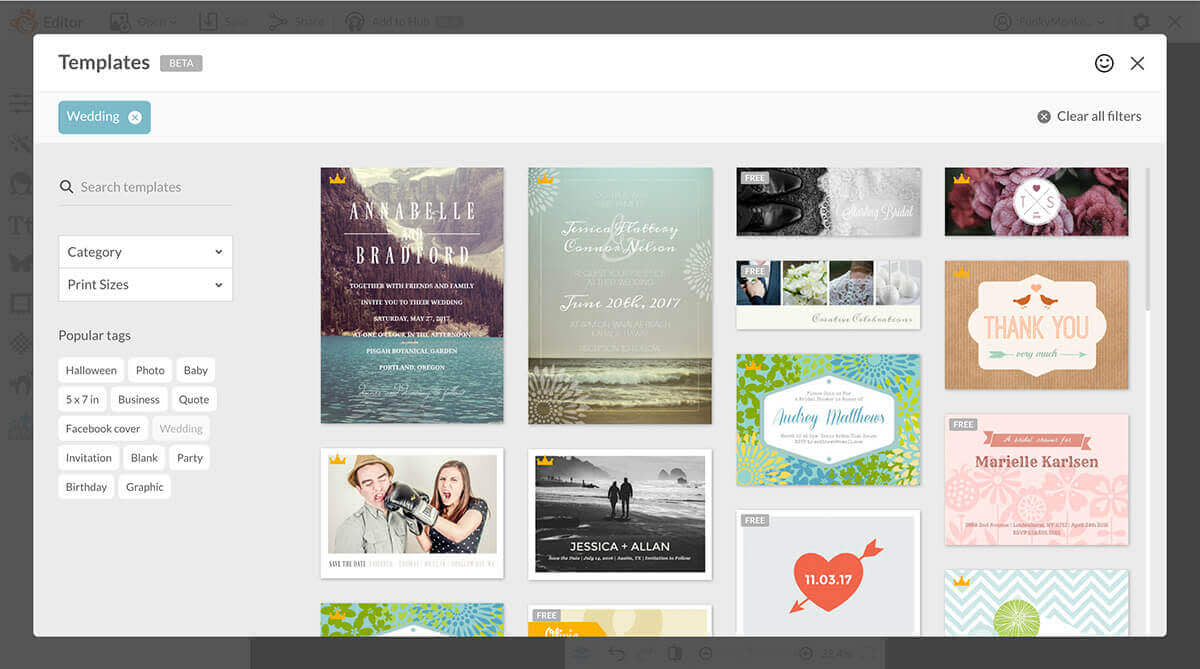
3. To change just the text, open the Layers palette by clicking the stacked-squares icon you’ll find at the leftmost end of the bottom toolbar.
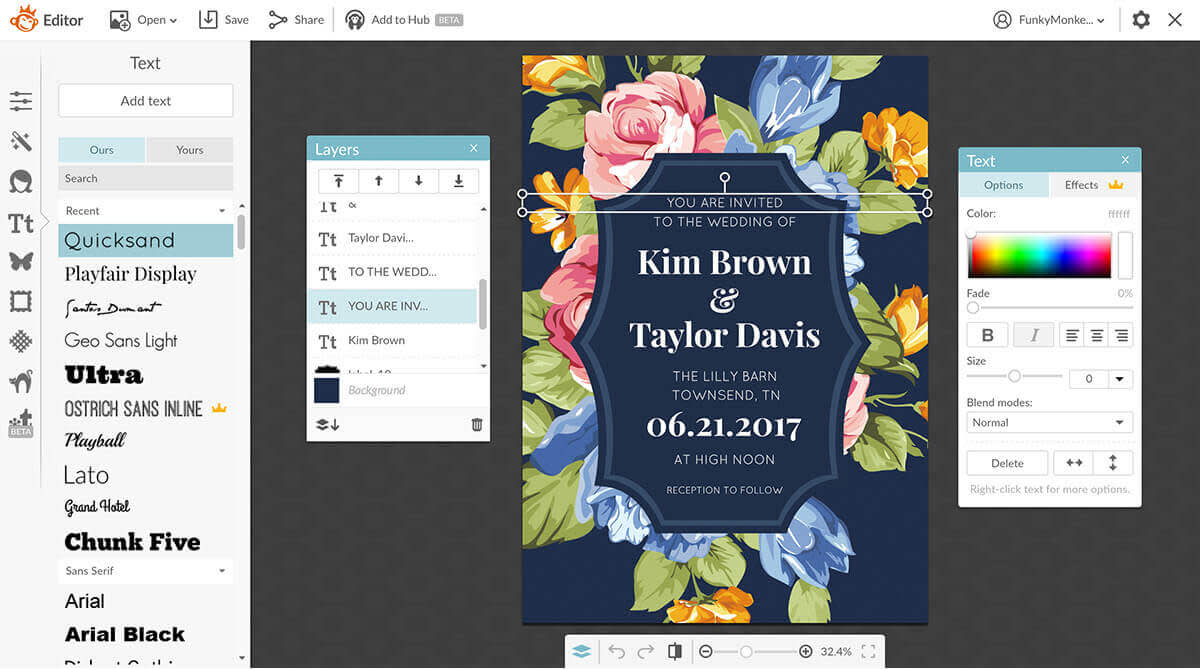
4. This is where it really gets good. Click the text string you want to edit in the Layers column (you can also click the text directly in the image), and change the size, color, and font to WHATEVER YOU WANT in the text box directly.
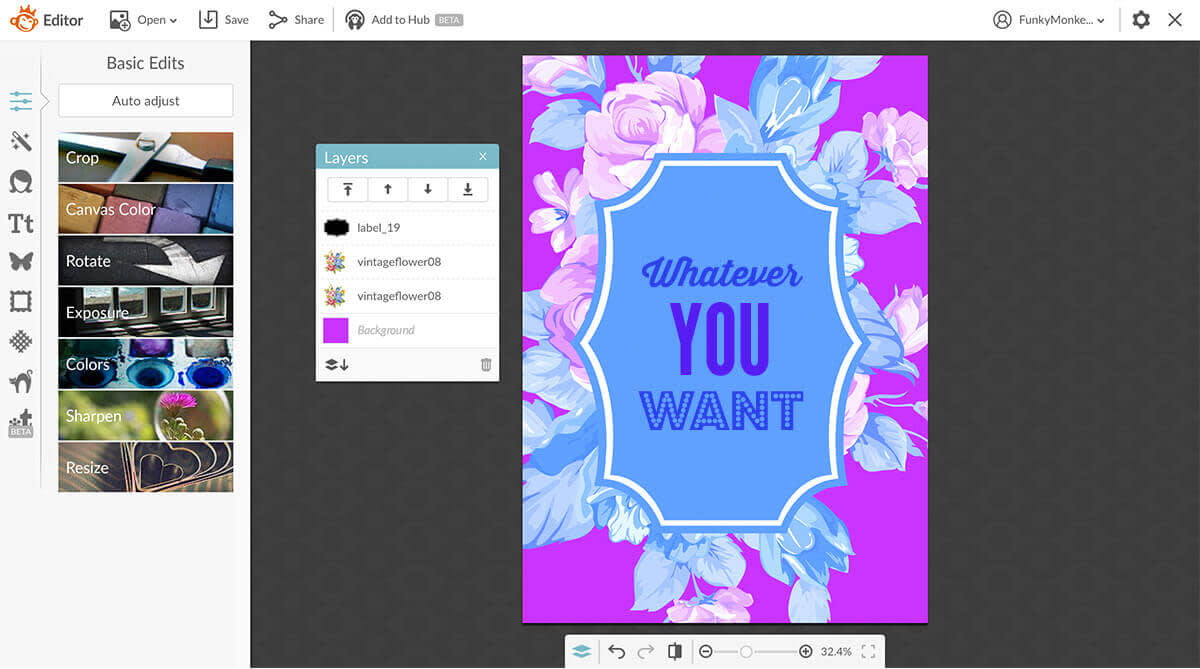
Seriously.
